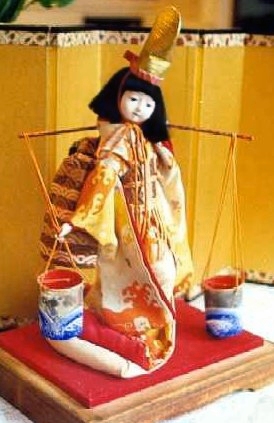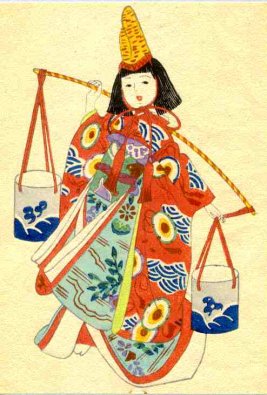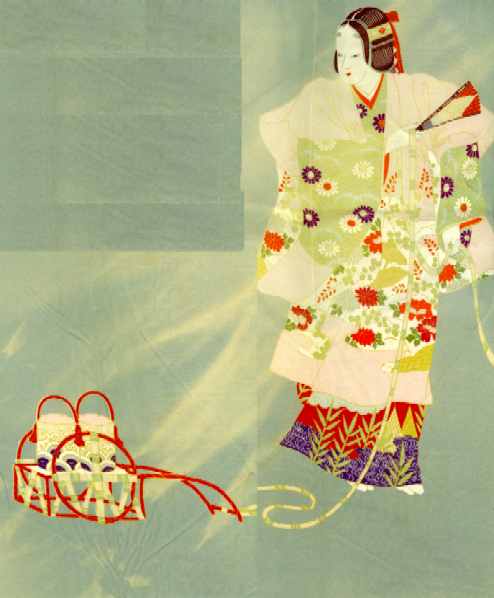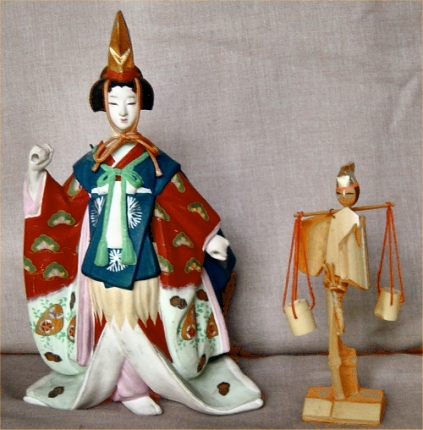A simple but mysterious subject: a young woman, very richly dressed, wearing a tall gold eboshi hat which ought to belong to a man, and carrying a pair of pails, painted with waves, on a yoke across her back. She is Shiokumi, a “salt-scooper” who carries seawater for the purpose of making salt. But why is she so elaborately dressed? Acccording to Sakura Dolls of Japan (Abston & Uchioke, 1963), she represents the daughter of a legendary lord of an inland region, who carried the salt in wartime.
Another story is the one about the 9th-century sisters, two shiokumi, who had been loved by the poet-politician Arihara Yukihara during his exile in Suma but were left with only his cloak, his hat, and a poem when he returned to the capital. This romantic story is the subject of the 14th-century Noh play Matsukaze (Pine Wind) which can be read online. In the next century this became a Kabuki play, and the dance of the shiokumi was a popular set-piece, which might be performed on its own. See John Fiorillo’s commentary on a print represented below.
 |
 |



